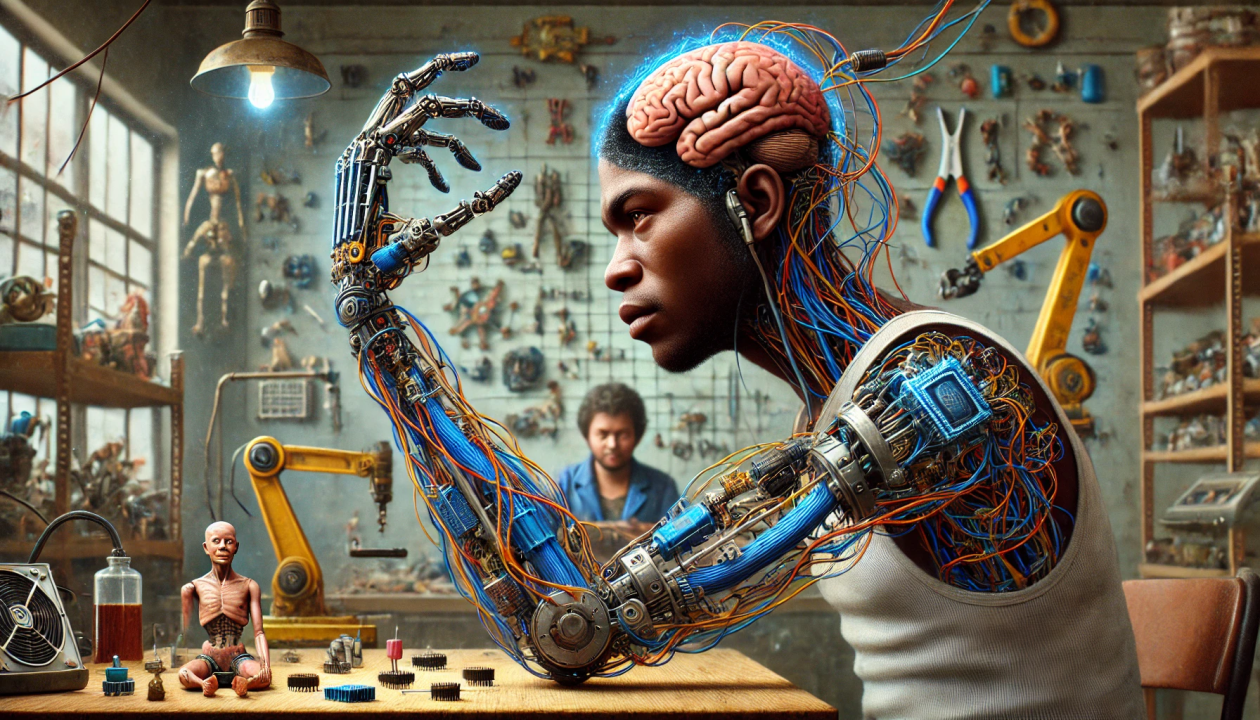Mind-Controlled Prosthetics: A Life Changing Innovation
Imagine being able to control an artificial limb with just your thoughts, without the need for invasive brain surgery. This groundbreaking technology, known as mind-controlled prosthetics, is opening a world of possibility for amputees, fundamentally altering what the future holds in accessibility and mobility. Recent advances, like those developed by Phantom Neuro as highlighted in a feature by Wired, demonstrate just how close we are to making these life-changing innovations widely available.
For more cutting-edge technology news and updates, visit ZexNews today.
The Science Behind Mind Controlled Prosthetics
At its core, mind-controlled prosthetics bridge biology and technology. This is done by capturing the electrical signals the brain sends to muscles, decoding these signals, and translating them into precise movement commands for a prosthetic limb. Unlike older methods that required invasive binding to nerves or even brain surgery, modern solutions use advanced sensors applied externally to effortlessly sync with a user’s existing nerve patterns.
For example, companies like Phantom Neuro are proving that sensors can read muscle activity and phantom limb signals, bypassing the need for surgical implants. This means a wider range of people can access this technology without the risk and recovery time associated with surgical procedures. This is a significant step forward, bringing mind-controlled prosthetics closer to becoming mainstream.
Why This Matters
Globally, millions of people rely on prosthetic limbs to regain functionality and independence. However, traditional prosthetics often come with limitations, such as delayed responses or unnatural movements, which make performing everyday tasks a challenge. Mind-controlled prosthetics not only eliminate these limitations but also create an intimate connection between the user and their artificial body part. This leads to smoother, more intuitive movements—and, perhaps more importantly, restores a sense of identity and agency to the user.
Key Advantages of Mind Controlled Prosthetics
This next-generation innovation offers several powerful benefits for users. Let’s break down some of the advantages that are reshaping lives:
1. Non-Invasive Solutions
Unlike earlier prosthetics requiring complex brain surgeries or electrodes implanted into the body, today’s advancements use non-invasive surface systems. Companies like Phantom Neuro are leveraging non-surgical sensors, which make this technology safer and accessible for a larger group of individuals.
2. Enhanced Precision and Control
These prosthetics allow users to perform detailed tasks with incredible accuracy. Whether it’s picking up a glass of water or tying shoelaces, the fine-tuned interaction feels closer to what the human body naturally performs. The ability to control an artificial limb with natural thought significantly reduces the cognitive load on the user, resulting in a more seamless experience.
3. Faster Adaptation
Thanks to more sophisticated programming and machine learning algorithms, users of mind-controlled prosthetics report significantly shorter adaptation periods. The technology learns alongside the individual, meaning the artificial limbs become more effective and personalized over time.
Game Changing Innovations in the Field
The future of prosthetics is brighter than ever, with revolutionary breakthroughs continually being developed. Let’s explore some of the recent innovations that are taking mind-controlled prosthetics to new heights:
Advanced Materials and Durability
Prosthetics today are made with cutting-edge materials such as carbon fiber and polycarbonate polymers, ensuring a lightweight yet robust build. Combined with advanced actuators mimicking natural joint movement, these innovations allow seamless daily use without restricting user mobility.
Scientists are now also integrating “smart” materials that can repair minor damages on their own. According to research from Wikipedia, such advancements could drastically increase prosthetic lifespans while reducing costs for users.
Artificial Intelligence Integration
The role of artificial intelligence (AI) in prosthetics cannot be overstated. AI enables the prosthetic limb to learn from a user’s unique neural patterns and make real-time adjustments. As a result, the prosthetics feel more personalized, offering adaptability to various situations and movements.
The Emotional Impact of Mind Controlled Prosthetics
While the technical benefits are incredible, the true magic of mind-controlled prosthetics lies in their emotional significance. Amputees who can fully control their prosthetics experience renewed confidence, independence, and a sense of belonging. Tasks once deemed impossible become second nature, opening up opportunities to live life as they envision.
One particularly moving example involves veterans who lost limbs in combat. Mind-controlled prosthetics enable them to reclaim autonomy and navigate their post-service lives with dignity and purpose. These stories underscore how this innovation is about far more than just technology—it’s about restoring humanity and hope.
Challenges and What’s Next
As promising as these innovations are, challenges remain. Cost is a significant barrier, with advanced mind-controlled prosthetics still being prohibitively expensive for many individuals. Additionally, while non-invasive methods are improving in accuracy, scaling this technology to be universally accessible will require considerable investment and collaboration across industries and governments.
However, the pace of development shows remarkable promise. Researchers are working on miniaturized sensors, cheaper materials, and open-source software to make mind-controlled prosthetics more affordable and widely available. As the demand for such solutions continues to grow, the industry is poised for rapid acceleration.
Conclusion: A Future Shaped by Mind Controlled Prosthetics
There’s no denying that mind-controlled prosthetics are transforming lives in ways previously thought impossible. By fusing neuroscience, AI, and advanced engineering, these devices are bridging the gap between human capability and machine efficiency. As accessibility improves and costs decrease, this life-changing innovation will soon become an integral part of healthcare worldwide.
The future is here, and it’s a future of hope, empowerment, and endless possibility.
Read more about the latest breakthroughs in technology and their impact on our lives at ZexNews.
“`





